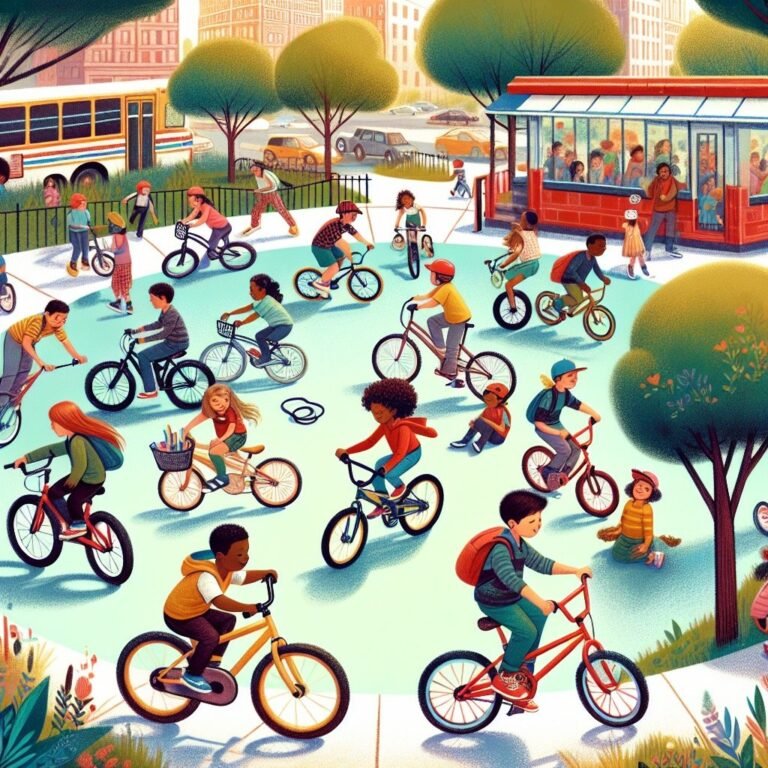Welcome to an exciting exploration of Fun Facts for Kids About Bicycles! As an expert in the field and a skilled writer of compelling popular science content, I am thrilled to take you on a journey through the fascinating world of bicycles. From the basic design of two wheels to the thrilling speeds achieved in bike races, there is so much to discover and appreciate about these iconic vehicles. Join me as we uncover the history, benefits, and unique aspects of bicycles that make them a beloved form of transportation and recreation for kids of all ages. Get ready to be inspired, entertained, and educated as we delve into the world of Fun Facts for Kids About Bicycles!
Fun Facts for Kids About Bicycles
1. Bicycles Have Two Wheels

For younger kids: Bicycles have two wheels that help them move.
For older kids: The two wheels of a bicycle provide stability and momentum, allowing riders to balance and travel efficiently.
Detailed explanation:Bicycles have two wheels, making them a popular mode of transportation and recreational activity all around the world. One of the key reasons why bicycles have two wheels is for balance and stability. The two wheels work together to keep the bike upright and moving forward smoothly.
Another important aspect of bicycles having two wheels is the concept of steering. The two wheels allow for easier maneuverability, as the rider can lean in a certain direction to turn the bike. This is known as countersteering, where the rider steers the handlebars in the opposite direction of the desired turn before leaning into the turn.
Additionally, having two wheels on a bicycle allows for greater speed and efficiency compared to other modes of transportation. The design of a bicycle with two wheels minimizes friction with the ground, making it easier for the rider to pedal and maintain momentum.
Furthermore, the two-wheel design of bicycles has led to various innovative styles and types of bikes, such as mountain bikes, road bikes, and BMX bikes. Each type of bike is specifically designed with two wheels to cater to different terrains and riding styles.
In conclusion, the fact that bicycles have two wheels is not just a simple design choice, but a key element that contributes to their functionality, versatility, and popularity as a mode of transportation and recreation. Fun Facts for Kids About Bicycles will continue to educate and inspire young riders about the wonders of two-wheeled transportation.
Fun Facts for Kids About Bicycles
2. Bicycles Were Invented in the 19th Century
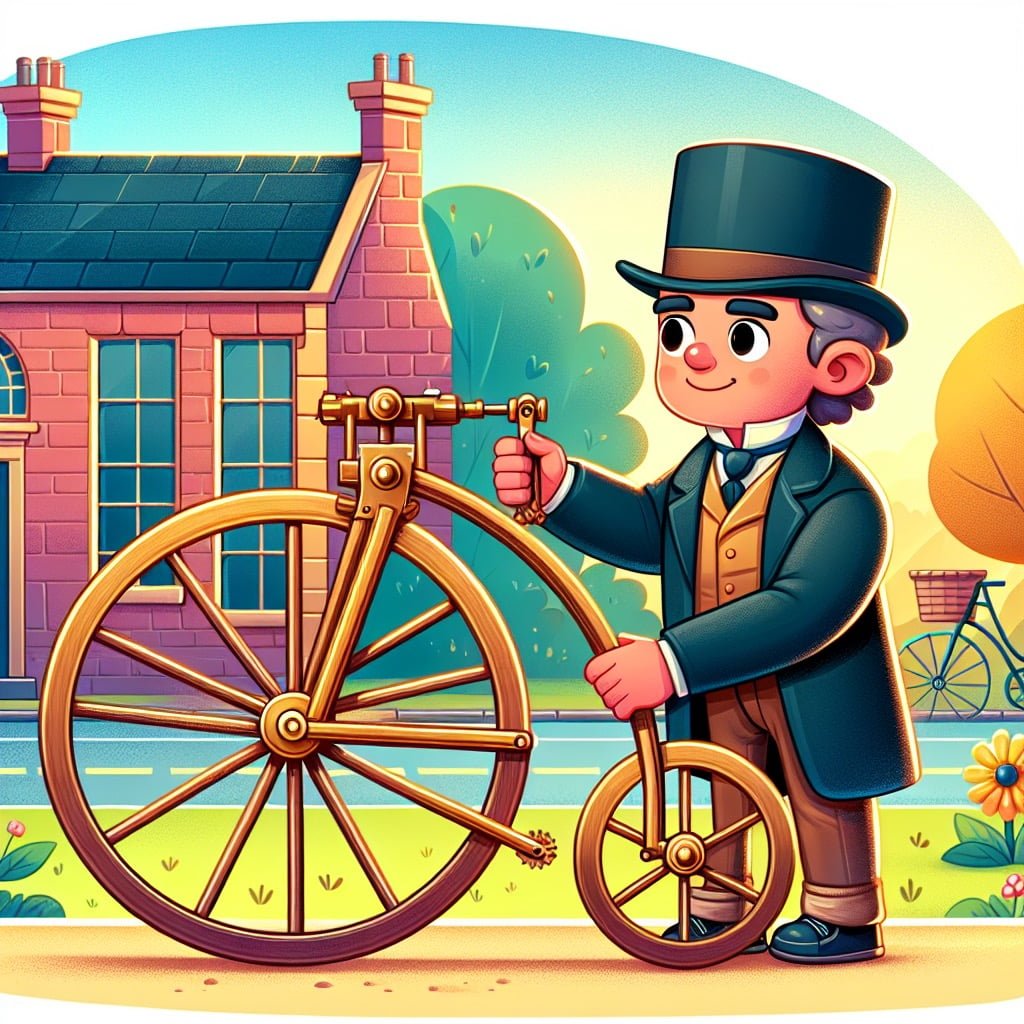
For younger kids: People invented bicycles a very long time ago!
For older kids: The bicycle as we know it today was first developed in the 19th century, revolutionizing personal transportation and recreation.
Detailed explanation:One of the most interesting **Fun Facts for Kids About Bicycles** is that they were actually invented in the 19th century. Prior to this invention, people primarily relied on walking or horse-drawn carriages for transportation. The development of the bicycle revolutionized personal transportation and had a significant impact on society.
The first bicycle, known as the “velocipede” or “dandy horse,” was invented by Karl Drais in 1817. It was a simple design consisting of a wooden frame with two wheels and a steering mechanism. Riders would propel themselves forward by pushing off the ground with their feet. While this early version of the bicycle may seem primitive compared to modern designs, it laid the foundation for the development of more sophisticated models in the years to come.
In the 1860s, the first pedal-operated bicycles were introduced, allowing riders to move more efficiently and reach higher speeds. This innovation made cycling a popular recreational activity and mode of transportation. By the end of the 19th century, bicycles had become a common sight on roads around the world.
The invention of the bicycle had a profound impact on society. It provided people with a more affordable and convenient means of transportation, allowing them to travel greater distances in less time. Bicycles also played a role in promoting physical fitness and outdoor recreation.
Overall, the invention of the bicycle in the 19th century transformed personal transportation and continues to be a popular mode of transportation and recreation to this day. Kids today can enjoy riding bikes just like people did over a century ago, thanks to this fascinating **Fun Facts for Kids About Bicycles**.
Fun Facts for Kids About Bicycles
3. Tour de France is a Famous Bicycle Race
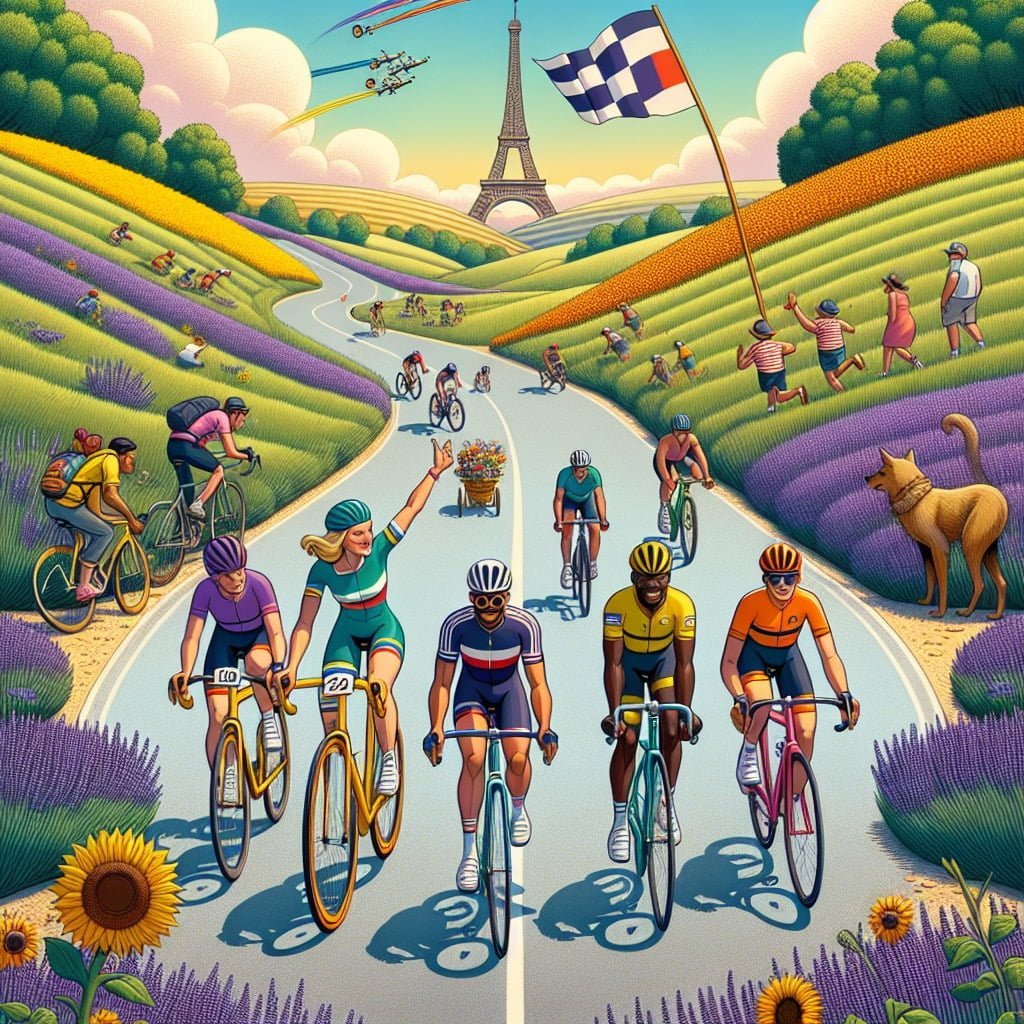
For younger kids: The Tour de France is a big race where people ride bicycles.
For older kids: The Tour de France is a prestigious bicycle race that takes place over three weeks and covers around 2,200 miles, showcasing incredible athleticism and endurance.
Detailed explanation:The Tour de France is a world-renowned bicycle race that takes place annually in France and sometimes passes through neighboring countries. It is one of the most prestigious events in the cycling calendar, attracting top cyclists from around the world to compete for the coveted yellow jersey.
One of the most exciting aspects of the Tour de France is the variety of terrains that riders must conquer. From grueling mountain climbs to flat sprints, each stage presents its own unique challenges. This diversity in terrain not only tests the physical endurance of the riders but also showcases the beauty of the French countryside.
The race typically lasts for three weeks and covers thousands of kilometers, with riders racing against the clock and each other. The excitement of the race is palpable, as spectators line the streets to cheer on their favorite cyclists and witness the drama unfold.
As a popular sport, the Tour de France has inspired many people to take up cycling as a hobby or form of exercise. Not only is cycling a great way to stay fit and healthy, but it also allows individuals to explore their surroundings and appreciate the outdoors. Fun Facts for Kids About Bicycles can include information about the history of the bicycle, different types of bikes, and the benefits of cycling for both physical and mental well-being.
In conclusion, the Tour de France is not just a bicycle race, but a cultural phenomenon that captures the hearts and minds of people around the world. It serves as a reminder of the power of human determination and the thrill of competition, making it a must-watch event for sports enthusiasts of all ages.
Fun Facts for Kids About Bicycles
4. Bicycles Help to Keep People Fit
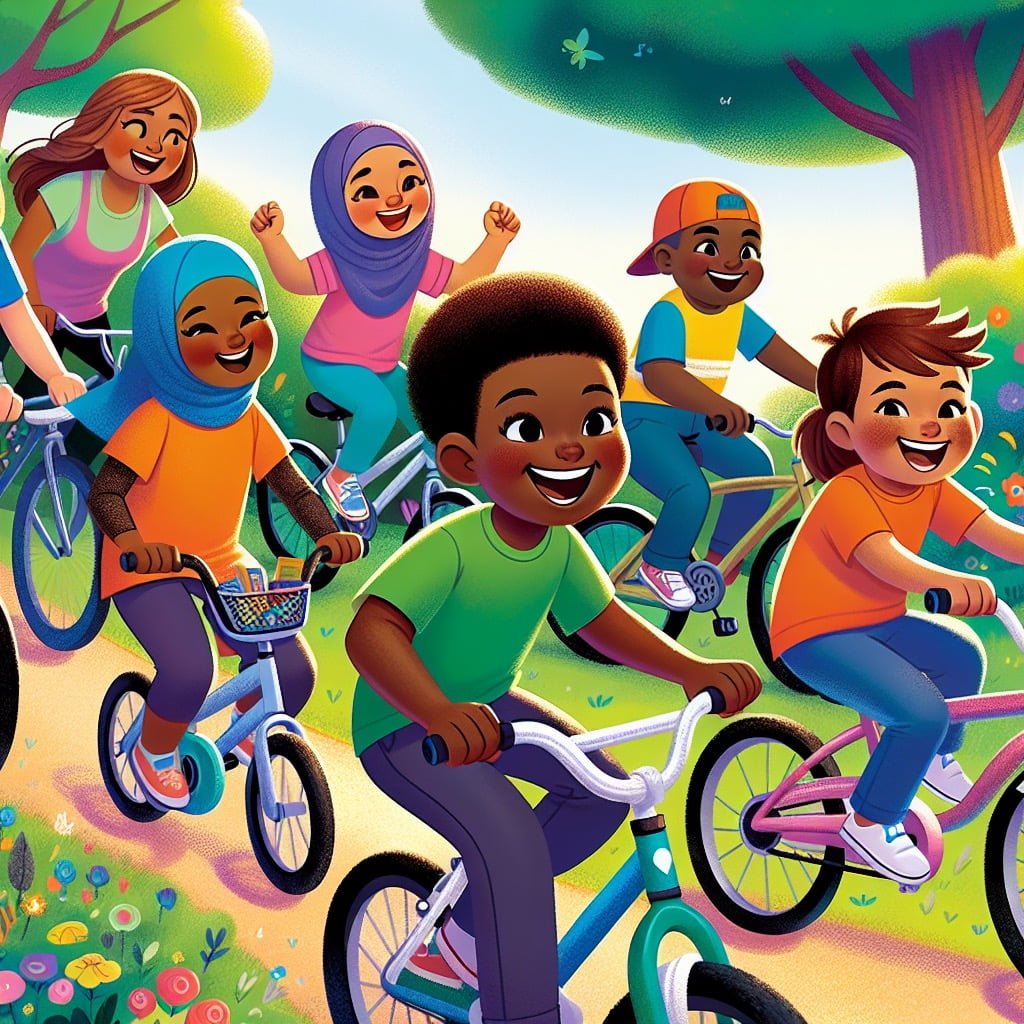
For younger kids: Riding a bicycle helps people stay healthy and strong.
For older kids: Regular bicycle riding provides excellent cardiovascular exercise, builds muscle strength, and improves overall fitness levels.
Detailed explanation:Bicycles are not only a fun mode of transportation, but they also play a crucial role in keeping people fit and healthy. Riding a bicycle is a great form of cardiovascular exercise that can help improve cardiovascular health, increase muscle strength, and enhance overall fitness levels.
One of the key benefits of cycling is that it is a low-impact exercise, making it easier on the joints compared to high-impact activities like running. This means that people of all ages and fitness levels can enjoy cycling without putting excessive strain on their bodies. Additionally, cycling is a weight-bearing exercise, which helps to strengthen bones and reduce the risk of osteoporosis.
Regular cycling can also help to improve mental health by reducing stress, anxiety, and depression. The act of cycling can be a meditative and therapeutic experience, allowing riders to clear their minds and focus on the present moment. Cycling can also boost mood and self-esteem, as riders experience a sense of accomplishment and empowerment from reaching their fitness goals.
In addition to the physical and mental health benefits of cycling, it is also an environmentally friendly mode of transportation that can help reduce carbon emissions and air pollution. By choosing to ride a bicycle instead of driving a car, individuals can contribute to the preservation of the planet for future generations.
In conclusion, bicycles are not just a fun mode of transportation, but they also offer numerous health benefits that make them an essential tool for staying fit and healthy. So the next time you hop on your bike, remember that you are not only enjoying a leisurely ride, but you are also taking steps to improve your overall well-being.
Overall, these Fun Facts for Kids About Bicycles highlight the importance of this simple yet effective form of exercise for maintaining a healthy and active lifestyle.
Fun Facts for Kids About Bicycles
5. The Fastest Bicycle Speed is Over 180 mph

For younger kids: Some bicycles can go really, really fast!
For older kids: The current record for the fastest speed on a bicycle is an astonishing 183.9 mph, achieved with the assistance of a specialized aerodynamic bike and rider position.
Detailed explanation:In the world of competitive cycling, athletes are constantly pushing the limits of human speed and endurance. One of the most impressive feats in the realm of cycling is the record for the fastest bicycle speed ever achieved, which stands at over 180 mph. This incredible speed was achieved by a professional cyclist on a specially designed bicycle, with streamlined aerodynamics and lightweight materials.
These high speeds are not easily attained and require a combination of physical strength, skill, and technological advancements in bicycle design. The athlete must have exceptional cardiovascular fitness and muscle strength to pedal at such high speeds. Additionally, the aerodynamics of the bicycle play a crucial role in reducing air resistance and allowing the cyclist to reach these incredible velocities.
It is important to note that these record-breaking speeds are typically achieved in controlled environments, such as specialized tracks or salt flats, where conditions are optimal for reaching maximum velocity. Attempting to reach such speeds on public roads would be extremely dangerous and is not recommended.
For kids who are interested in bicycles, learning about these extreme speeds can be a fascinating and exciting way to explore the world of cycling. Understanding the science behind bicycle design and how it impacts performance can open up a world of possibilities for young cyclists looking to improve their skills. Fun Facts for Kids About Bicycles like the fastest bicycle speed record can inspire curiosity and passion for the sport, encouraging children to explore the exciting world of cycling further.
Fun Facts for Kids About Bicycles
6. The Penny-farthing Was the First Bicycle Design
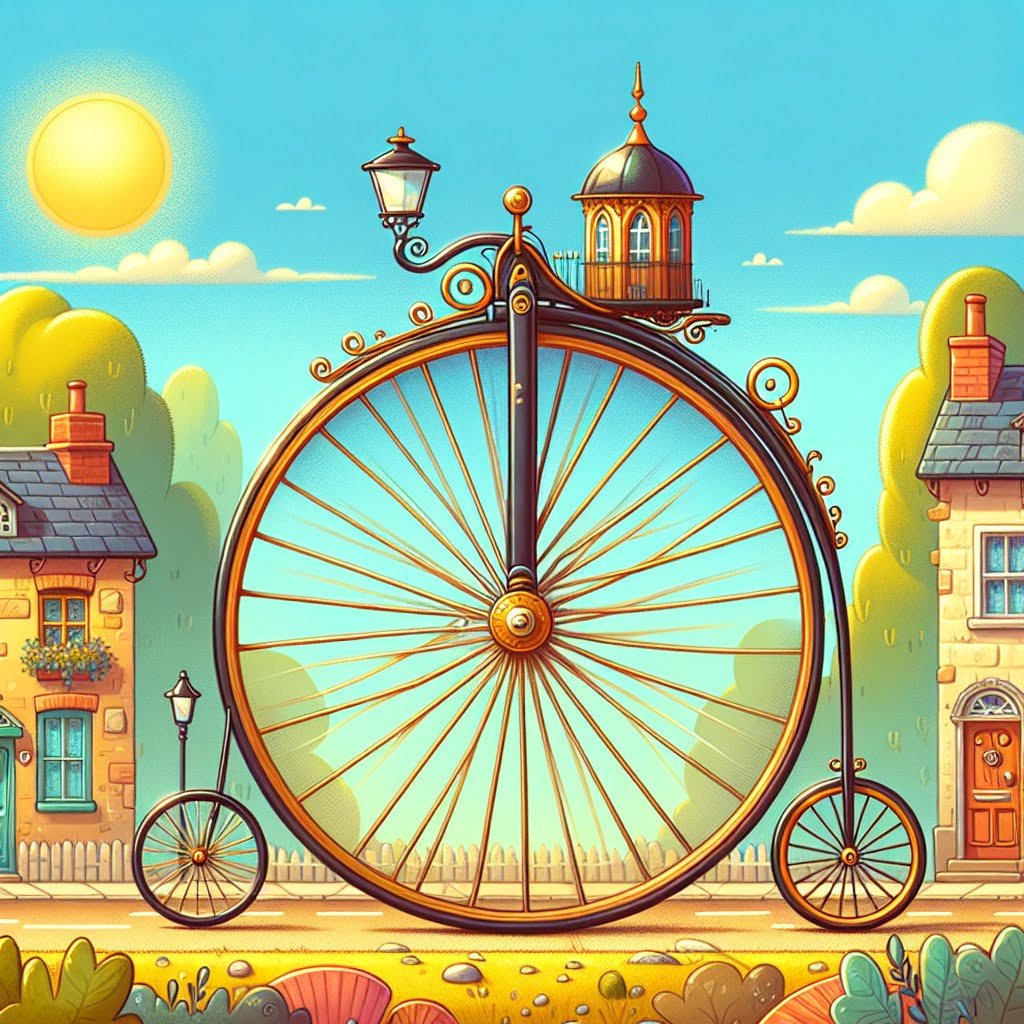
For younger kids: The Penny-farthing bicycle was very different from the ones we use today.
For older kids: The Penny-farthing, with its large front wheel and small back wheel, was the first machine to be called a ‘bicycle’ and was popular in the 1870s and 1880s.
Detailed explanation:The Penny-farthing, also known as the high wheeler, was the first bicycle design to gain popularity in the late 19th century. This unique bicycle was easily recognizable by its large front wheel and small rear wheel, creating a stark size difference that resembled the old British penny and farthing coins – thus giving the bike its name.
One of the most interesting **Fun Facts for Kids About Bicycles** is that the Penny-farthing was not the most practical or safest design. The high wheel allowed for greater speeds due to the increased wheel circumference, but it also made mounting and dismounting quite challenging. Riders had to literally climb onto the high seat, often using a step or another person for assistance. Additionally, the large front wheel meant that a fall could result in serious injury, as riders were positioned high off the ground.
Despite these drawbacks, the Penny-farthing was incredibly popular among daredevils and cycling enthusiasts of the time. It was a symbol of status and adventure, as only the most daring individuals would dare to ride such a precarious machine. The design eventually fell out of favor as safer and more practical bicycles, such as the safety bicycle with two equal-sized wheels, were developed.
In conclusion, while the Penny-farthing may not have been the most practical or safest bicycle design, it holds a special place in cycling history as the first design to capture the imagination of the public. As **Fun Facts for Kids About Bicycles** go, the Penny-farthing is sure to pique the interest of young minds curious about the evolution of these fascinating machines.
Fun Facts for Kids About Bicycles
7. Bicycles Don’t Produce Pollution
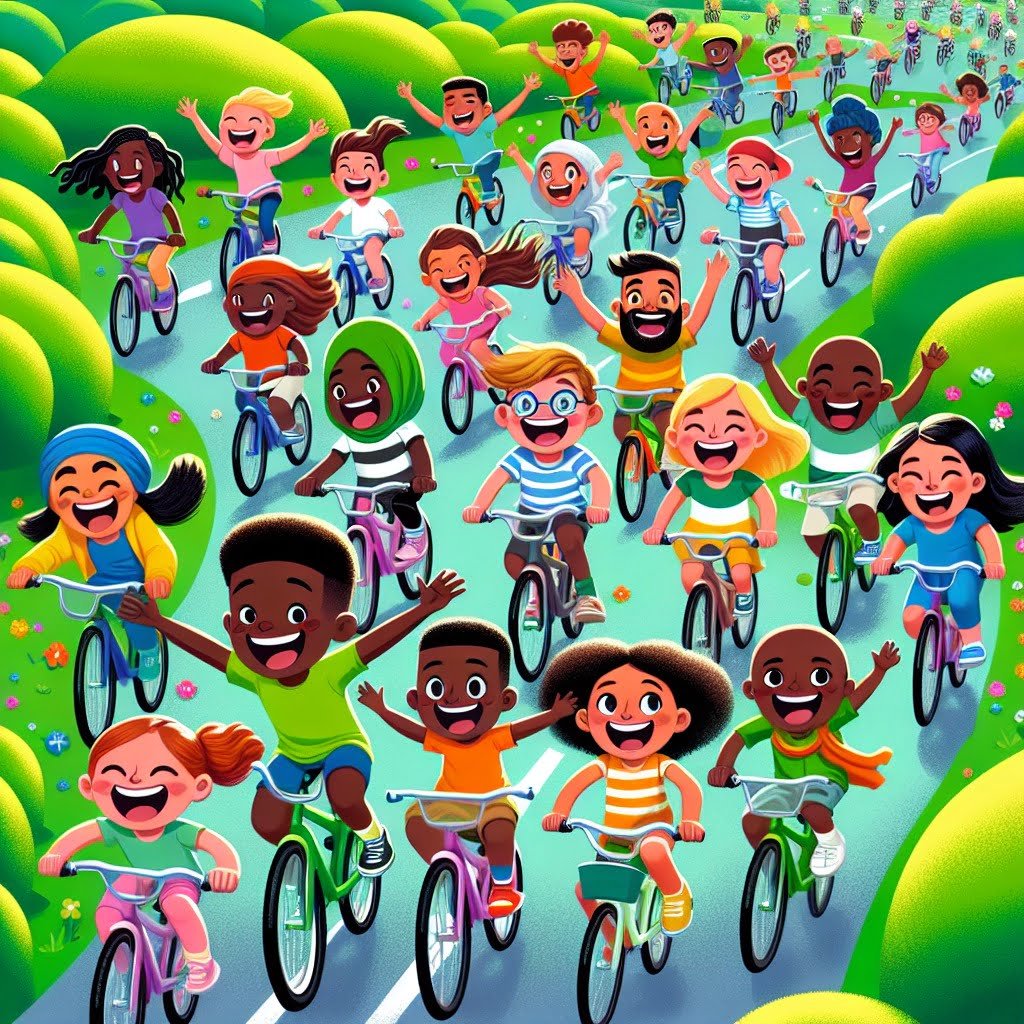
For younger kids: Riding a bicycle doesn’t make the air dirty like some other vehicles do.
For older kids: Unlike cars and motorcycles, bicycles do not produce any harmful emissions, making them an eco-friendly mode of transport.
Detailed explanation:One of the most fascinating Fun Facts for Kids About Bicycles is that they don’t produce pollution. Unlike cars and other motor vehicles that run on gasoline or diesel, bicycles operate solely on human power. This means that as you pedal your bike along the roads and trails, you are not emitting any harmful gases or pollutants into the atmosphere.
The lack of pollution produced by bicycles has numerous positive effects on the environment and human health. The reduction in greenhouse gas emissions helps to combat climate change and improve air quality. In urban areas, where traffic congestion and air pollution are major concerns, choosing to ride a bike instead of driving a car can make a significant difference.
Additionally, the health benefits of biking are well-documented. Regular cycling can improve cardiovascular fitness, strengthen muscles, and increase overall physical health. By opting to ride a bike for transportation or recreation, individuals can reduce their carbon footprint while also improving their own well-being.
Of course, it’s important to remember that biking does require some resources to manufacture and maintain the bicycles themselves. However, when compared to the environmental impact of producing and driving a car, the overall carbon footprint of bicycles is significantly lower.
So, the next time you hop on your bike for a ride, remember that you are not only having fun and getting exercise – you are also helping to protect the environment and reduce pollution. Fun Facts for Kids About Bicycles truly show how simple choices can make a big difference.
Fun Facts for Kids About Bicycles
8. The Velocipede Was an Early Bicycle Prototype

For younger kids: The Velocipede was like a very old bicycle that people rode a long time ago.
For older kids: The Velocipede, also known as a ‘bone shaker’, was an early two-wheeled human-powered vehicle dating back to the 1860s.
Detailed explanation:The Velocipede was a significant early prototype of the modern bicycle, playing a crucial role in the history and development of this popular mode of transportation. Also known as the “boneshaker” due to its uncomfortable ride, the Velocipede was a pedal-driven vehicle that emerged in the mid-19th century.
This precursor to the bicycle featured a wooden frame, iron tires, and pedals attached directly to the front wheel. Riders would propel themselves forward by pushing down on the pedals, causing the front wheel to turn and move the vehicle forward. The design of the Velocipede was a significant departure from earlier transportation devices, such as the draisine, which required riders to propel themselves forward using their feet instead of pedals.
Despite its uncomfortable ride and impractical design, the Velocipede was a popular novelty among the upper class in Europe and North America. It sparked interest in the possibilities of pedal-powered transportation and paved the way for further innovations in bicycle design. Eventually, improvements in materials and technology led to the development of the modern bicycle as we know it today.
Fun Facts for Kids About Bicycles show that the Velocipede was a key stepping stone in the evolution of the bicycle, showcasing the ingenuity and creativity of early inventors and engineers. By understanding the history of the Velocipede, we can appreciate how far bicycles have come and the important role they continue to play in our lives.
Fun Facts for Kids About Bicycles
9. Bicycles Can Travel Faster Than Walking
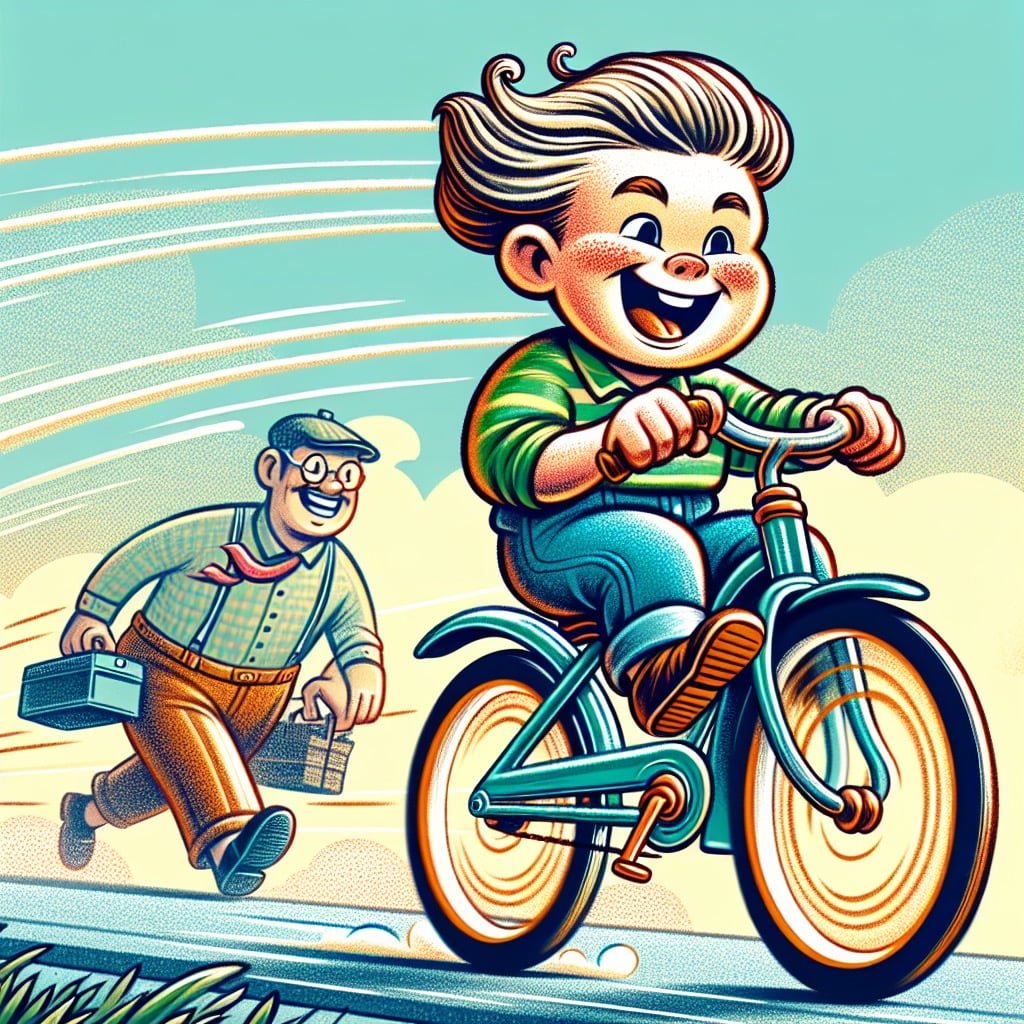
For younger kids: Bicycles can go much faster than walking!
For older kids: With the ability to reach speeds of 10-15 mph on average, bicycles allow riders to cover distances more quickly and efficiently than walking.
Detailed explanation:Bicycles are a popular mode of transportation and recreational activity that have been around for centuries. One of the most well-known fun facts for kids about bicycles is that they can travel faster than walking. This is due to the efficiency of the bicycle design, which allows for smooth movement with minimal effort.
When we walk, we rely on the muscles in our legs to propel us forward. This can be tiring, especially over long distances. In contrast, when we ride a bicycle, we can use the pedals to transfer our energy to the wheels, allowing us to travel much faster with less effort. This efficiency is one of the reasons why bicycles are such a popular mode of transportation for people of all ages.
Another factor that allows bicycles to travel faster than walking is their aerodynamic design. Bicycles are streamlined to reduce air resistance, allowing riders to move through the air more easily. This means that even at relatively low speeds, bicycles can travel faster than walking.
Overall, the speed and efficiency of bicycles make them a great option for getting around town, exercising, or just having fun. So the next time you’re looking for a quick and easy way to get from point A to point B, consider hopping on a bicycle and experiencing the thrill of traveling faster than walking. Fun facts for kids about bicycles like this one can help inspire a love of cycling and a lifelong appreciation for this amazing mode of transportation.
Fun Facts for Kids About Bicycles
10. Bicycles Can Be Used for Various Activities
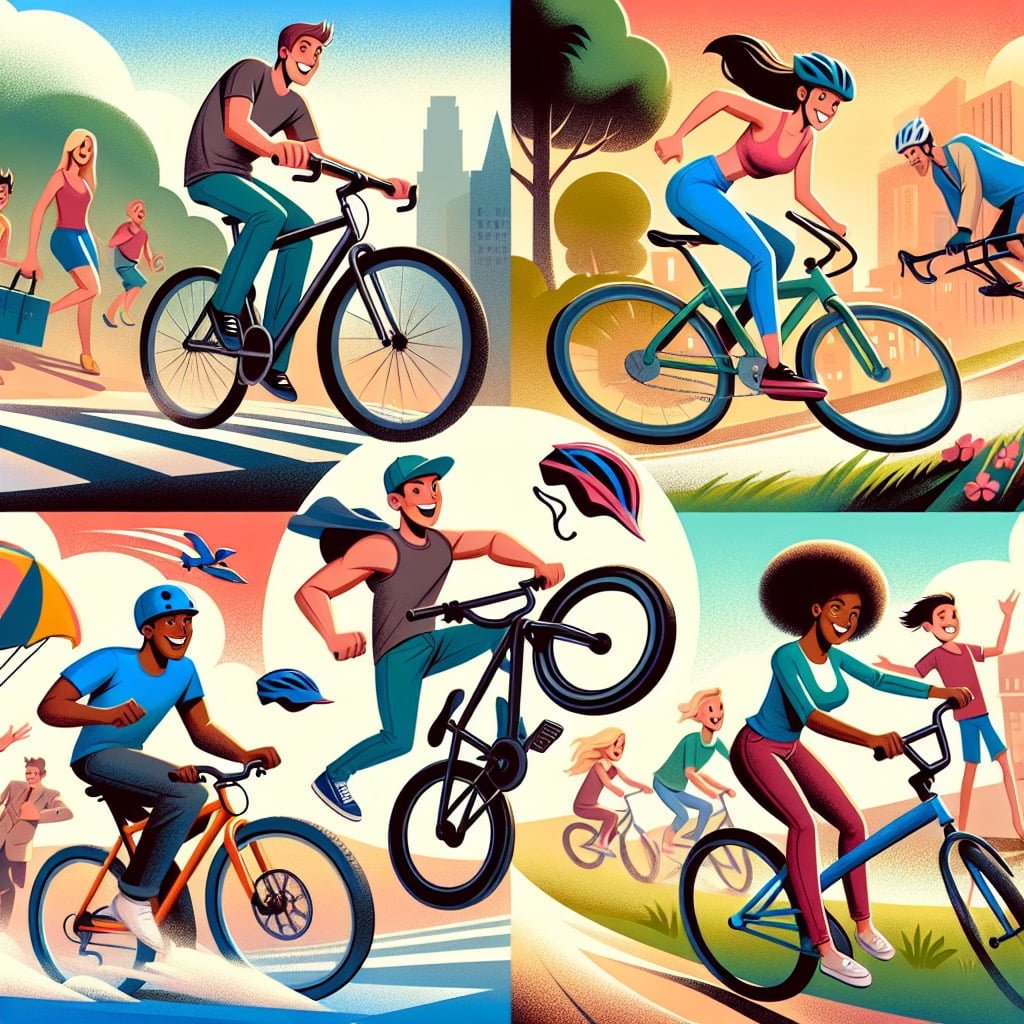
For younger kids: People can use bicycles for many fun things like racing and exploring.
For older kids: Bicycles are incredibly versatile, being used for commuting, racing, touring, BMX, mountain biking, and various other recreational activities.
Detailed explanation:Bicycles are an incredibly versatile mode of transportation and recreation, making them perfect for a wide range of activities. One of the most common uses for bicycles is commuting to work or school. Not only is cycling a great way to reduce your carbon footprint and save money on gas, but it is also a fantastic form of exercise that can help improve cardiovascular health and overall fitness.
Aside from commuting, bicycles can also be used for leisurely rides through parks, along scenic trails, or even in organized group rides. Cycling is a wonderful way to explore new places and enjoy the great outdoors. Additionally, many cities now have dedicated bike lanes and paths, making it easier and safer for cyclists to get around.
Furthermore, bicycles are often used for competitive sports such as road racing, mountain biking, and BMX. These events showcase the speed, endurance, and skill of cyclists from around the world, and are incredibly exciting to watch.
For children, bicycles are a staple of childhood fun and play. Riding bikes with friends, learning how to balance and steer, and even participating in bike rodeos or races can provide hours of entertainment and help kids develop important physical skills.
In conclusion, bicycles can be used for a wide variety of activities, from transportation and exercise to recreation and sport. They are truly versatile machines that offer something for everyone. So, get out there and enjoy all the fun facts for kids about bicycles!
Did You Know?
The longest tandem bicycle ever built had 35 seats and was over 67 feet long, requiring two days for a full rotation of the pedals!
Summary of Interesting Facts for Children About Bicycles
Bicycles are not just a mode of transportation, they are a source of endless excitement and adventure for people of all ages. From the thrill of cruising down a hill to the satisfaction of conquering a challenging trail, bicycles offer limitless opportunities for enjoyment and exploration. But did you know that bicycles also have a rich history filled with fascinating facts that can captivate the minds of both children and adults?
Learning about the origins of bicycles, the mechanics behind how they work, and their cultural significance can not only be entertaining, but also educational. By delving into fun facts about bicycles, children can develop a deeper appreciation for the world around them and gain a better understanding of how innovation and technology have shaped our society.
Whether you’re a budding cyclist or simply curious about the history of bicycles, exploring fun facts about this iconic mode of transportation is sure to open up a world of adventure and discovery. So, join me as we dive into the exciting world of bicycles and uncover the hidden gems that make them so much more than just a way to get from point A to point B. Trust me, you won’t want to miss out on all the fascinating facts waiting to be uncovered!
Sources and additional information for Fun Facts for Kids About Bicycles
WikipediaBritannicaNational Transportation Safety BoardFederal Aviation AdministrationNational Railroad Passenger Corporation (Amtrak)The Automobile Association (AA)BoeingCar and DriverAirbusTrainWebAuto ExpressAviation Week NetworkNational Air and Space MuseumDiscovery ChannelHowStuffWorksPopular MechanicsScience ChannelNational Railroad MuseumInternational Civil Aviation OrganizationAmerican Automobile Association (AAA)
